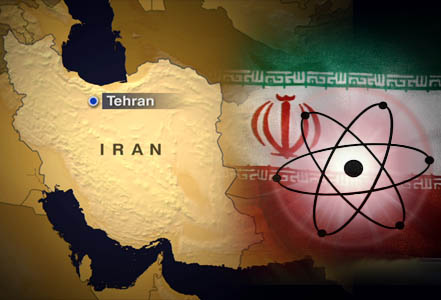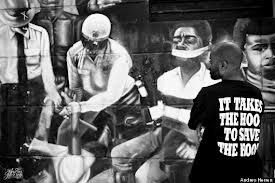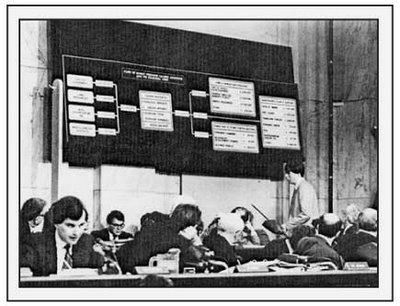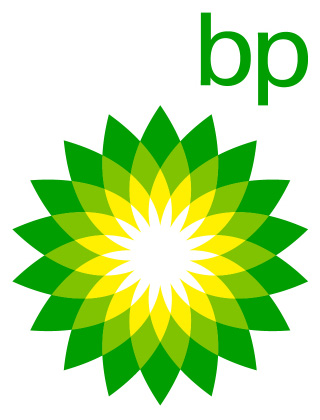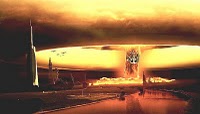Alex Constantine - June 2, 2008
By Nader Bagherzadeh
(CASMII Columns)
www.campaigniran.or
Monday, June 2, 2008
Remember the run up to the Iraq war back in 2002? Well, the so called “liberal” US media sources, such as the New York Times (NYT) [1] and the Washington Post (WP) [2], are at it again, this time regarding Iran’s nuclear program. Their recent editorials remind us of the perilous game they are playing to push their internal agenda, which is to confront Iran’s new technological nuclear field achievements at all cost, in order to appease Israel’s intransigent position on this issue.
Interestingly enough, although both papers have advocated a non-military solution to the problem of Iran’s nuclear ambitions, they do not recognize that these baseless editorials give more ammunition to the War Party to call for yet another unjust war in the Middle East. Sadly, both editorials are riddled with misrepresentation of the IAEA report as well as bold inaccuracies that really demonstrate their disingenuous understanding of key issues.
For instance, WP claims [2] that Iran has been installing new centrifuges without required notification and did not allow inspectors to access the centrifuge assembly facilities. However, the same WP editorial fails to clarify that Iran, under its current agreement with the IAEA, is not obligated to undergo any of those steps (i.e., code 3.1 and Additional Protocols have not been approved by Iran).
As in the past editorials, this paper charges the head of IAEA, El Baradei, as soft on Iran. On the contrary, the current two-sided report on Iran [3] is yet another indication that El Baradei is not an independent reviewer and is probably under heavy pressure from Washington to dilute Iran’s cooperation with the IAEA by expanding on the so called “alleged studies.” These are allegations supported by dubious intelligence on Iran’s past weapon design program studies prior to 2004.
Even if these “alleged studies” were based on sound intelligence, it is not the IAEA’s responsibility to inquire about programs that may genuinely be related to missile development and conventional weapon design. The IAEA’s current agreement is to report on Iran’s “non-diversion” of declared nuclear activities, which it has and for the nth time has confirmed that Iran has not violated that obligation. The development of re-entry vehicles for missiles or implosion control devices are within Iran’s rights as a sovereign nation as long as nuclear material was not diverted to military projects. Indeed, the IAEA clearly reconfirms that it does not have any information regarding direct nuclear weaponization activities [3].
NYT’s angle on their editorial is broader; they attack Iran’s defiance of UNSC sanctions for not suspending enrichment. It should be noted that the reason Iran’s dossier was sent, illegally, to the UNSC was to help the IAEA with resolving issues of concern regarding past nuclear work in Iran. In the last report (February 2008), IAEA closed all six areas of concern regarding past nuclear activities, and hence, if it was not for these “alleged studies,” Iran’s case would have been closed and transferred back to the IAEA from UNSC. Of course the NYT’s editorial does not mention anything about Iran’s past close cooperation to resolve these six key areas of concern that no longer exist.
The latest IAEA report also gives a better understanding of Iran’s technological advances in research and development for centrifuge design. It is clear that Iranian engineers, under even the most severe sanctions on dual use equipment acquisitions, have been able to overcome difficulties and make faster and more stable centrifuges; namely IR2, IR3, and IR4 designs.
Additionally, the total amount of uranium feed that has been reported for the past 5 months to the older IR1 centrifuge design (previously called P1) suggests that some of the stability issues for sustained operation have been resolved and the efficiency of enrichment capability has gone from 10% to 50%, a 5-fold improvement in less than one year [4]. There should be no doubt that as far as running a cascade of centrifuges is concerned, Iran has crossed the imaginary red-line, and from here on their goal is to expand current programs by increasing the total number of cascades to achieve self-sufficiency in making enough LEU fuel for peaceful purposes.
The current Bush Administration’s policy of zero-enrichment is in conflict with the facts on the ground when it comes to Iran’s current enrichment capability. The zero-enrichment policy is no longer viable and needs to be revisited from more practical and logical points of view. A better approach that may be acceptable to Iran is the so called [5] “Pickering’s Proposal.” In this proposal, Iran will be allowed to have a domestic enrichment facility, but with enrichment levels (5%) that are far below weapons’ grade (90%), and any military involvement with nuclear facilities will be prohibited. Finally, more intrusive inspections based on the Additional Protocols have to be accepted by Iran.
The current focus of media and government officials on carrots and sticks for solving Iran’s nuclear issue, without agreeing to Iran’s desire to continue work on nascent enrichment capability for peaceful purposes is doomed for failure. A sensible approach is to accept the limited enrichment capability of Iran, but enforce a strict inspection strategy to prevent any potential diversion of nuclear material for military purposes.
•••••••
[1] http://www.nytimes.com/2008/05/28/opinion/28wed2.html?ref=opinion
[2] http://www.washingtonpost.com/wpdyn/content/article/2008/05/27/AR2008052702752.html
[3] http://www.isis-online.org/publications/iran/IAEA_Iran_Report_26May2008.pdf
[4] http://www.isis-online.org/publications/iran/ISIS_Iran_IAEA_Report_29May2008.pdf
[5] http://www.nybooks.com/articles/21112
http://www.campaigniran.org/casmii/index.php?q=node/5111
